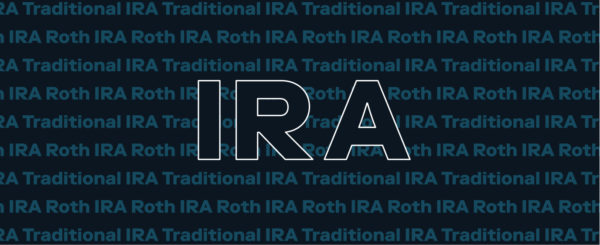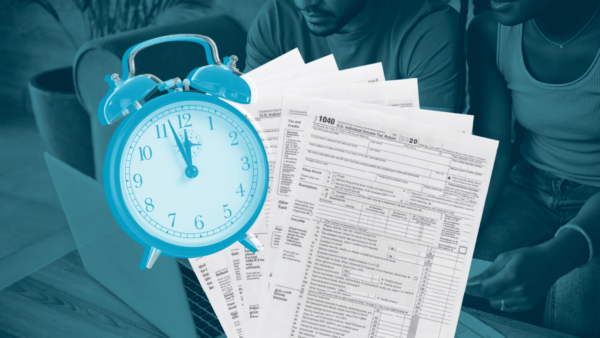Nov 21, 2023
What Is the FIRE movement?

The Financial Independence, Retire Early (FIRE) movement is a philosophy dedicated to aggressive budgeting, extreme saving, investing, and retirement planning. The goal is to achieve financial freedom that allows you to retire far earlier than traditional savings methods would allow.
In this article, we’ll cover:
- What the FIRE movement is
- How the FIRE movement works
- Common FIRE movement philosophies
- Who the FIRE movement attracts
- Tips for participating in the FIRE movement
What is the FIRE movement?
FIRE stands for Financial Independence, Retire Early. The goal is to save up enough money so you no longer need to work and to do so much younger than the traditional retirement age of 65. Financial independence is achieved when you can cover all your living expenses with your savings and investment income so that you can retire early.
Exactly who started the FIRE movement is unclear, but many of the concepts underlying it come from Your Money or Your Life, a 1992 book by Vicki Robin and Joe Dominguez. The book’s core premise is that people should evaluate their expenses in relation to the number of working hours it took to pay for them. For example, if you want to buy shoes that cost $100, and you make $25 an hour, are those shoes worth working for four hours of your life?
FIRE is a long-term strategy that involves maximizing income, reducing costs, and aggressive saving and investing. There are three common kinds of FIRE strategies to choose from.
- Fat FIRE: Those attempting Fat FIRE want to retire early but maintain their current standard of living. This requires substantial savings, heavy investing, and generally a high income, as the focus is more on maximizing income and investment returns than reducing expenses.
- Lean FIRE: Lean FIRE is the opposite of Fat FIRE, and is the more traditional FIRE strategy. When you Lean FIRE, you’re willing to pursue a minimalistic lifestyle in order to retire early. Some people will live on as little as $25,000 per year, even if their income is many times more than that.
- Barista FIRE: This approach balances the techniques of Fat FIRE and Lean FIRE. These individuals are willing to “partially retire,” quitting their full-time job and supplementing their retirement with part-time work or passive income in order to live below their means without committing to an extremely frugal lifestyle.
How does the FIRE movement work?
There are three major elements to any FIRE strategy: reducing expenses, increasing income, and investing as much money as you can in a mix of taxable and tax-advantaged accounts.
To achieve financial independence and retire early, you’ll need to understand how much you need to retire, actively manage your current lifestyle and expenses, and stick to a strict savings and investing strategy.
- Thorough planning: The FIRE movement stresses the importance of having a detailed financial plan and sticking to it long-term. That requires close attention to personal finances, including detailed retirement planning and precise budgeting for how every penny is spent, saved, and invested.
- Financial discipline: The goal is to maximize the money coming in, minimize the money going out, and optimize where your money is stored and invested. You can’t casually participate in the FIRE movement; it requires consistency and discipline. That said, you can use a lot of the FIRE concepts to improve your own financial situation, even if you aren’t following the philosophy to the letter.
- Dedicated investing: Investing is at the core of retirement planning. But when you pursue FIRE, you can’t rely solely on traditional retirement strategies. Retirement accounts like 401(k)s and traditional and Roth IRAs come with steep penalties for withdrawing money before age 59½, and you can’t start drawing social security until age 62. So FIRE followers need a taxable brokerage account that can provide income when they retire early. FIRE followers also have to invest a larger portion of their income than is traditionally recommended in order to retire more quickly.
Core FIRE movement techniques
FIRE followers have put together a handful of specific strategies for achieving the level of financial independence needed for early retirement.
The rule of 25
If you want to retire early, you need to know how much money you need to live after you stop working. The rule of 25 states that you’ll need to save up 25 times of your annual expenses before you retire. You can calculate this number for yourself by estimating your monthly expenses, multiplying them by 12 to get your annual expenses, and then multiplying that number by 25.
Here’s an example:
- Monthly expenses = $5,000
- Annual expenses = $5,000 x 12 = $60,000
- FIRE number = $60,000 x 25 = $1.5 million
The rule of 25 provides the key financial goal for the FIRE method: the amount of money you have to save up before you can retire. Of course, the rule makes several assumptions, so think of it as a goalpost for planning instead of a fixed number. This rule doesn’t account for inflation or significant lifestyle changes, like new chronic illnesses or substantial changes in annual costs. It’s also designed to cover 30 years of retirement. Depending on how early you plan to retire and how circumstances change over time, you may need to adjust your target number.
The 4% rule
The 4% rule states that retirees can withdraw 4 percent from their savings and investment accounts every year in order to have enough money to live on for 30 years. This means withdrawing 4 percent in year one and then adjusting for inflation in subsequent years.
For example:
- Value of savings and investments: $1.5 million
- Annual withdrawal in year one: 1,500,000 x .04 = $60,000
- Annual withdrawal in year two (assuming 2% inflation): $60,000 x 1.02 = $61,200
The 4% rule is designed to be general. So, when building your personal FIRE strategy, test out a couple of variations to see what might work for you. Maybe you need closer to 5% to 6% or can get away with as low as 3.5% depending on the lifestyle you plan to have in retirement.
The power of compounding growth
Compounding is when your interest and returns from one period earn additional interest and returns in subsequent periods. Essentially, it’s a percentage of money you gain on top of what your principal investment earns. Compounding can be a powerful tool to get you closer to early retirement and financial freedom.
The power of compounding relies on long-term savings and investments. Interest on savings, dividend income from stocks, and returns on investments must stay invested in order to earn additional returns. The sooner you start investing, the longer your money has to grow and compound.
Tax efficiency
Traditional retirement accounts come with tax advantages that help you keep more of your money instead of spending it on taxes. But if you withdraw money before you’re 59½, you lose those advantages and have to pay penalties. FIRE followers often seek to retire much earlier than that, so they diversify where they invest so they can reap tax benefits while also generating enough income to cover their expenses between early retirement and traditional retirement age.
- Tax-advantaged retirement accounts: IRAs and 401(k)s can help lower your taxable income and allow for tax-deferred or tax-free growth on investments as long as you don’t withdraw money early. FIRE investors often leverage these accounts to save for their retirement expenses after age 59½, while planning to withdraw from their brokerage account after they retire but before they hit that milestone.
- Health savings accounts (HSAs): Healthcare expenses are an important consideration in planning for your later years, and HSAs can provide significant tax savings on money you spend on qualified medical expenses. First, you fund the HSA with pre-tax money, reducing your taxable income each year you contribute. Second, you don’t have to pay taxes on money you withdraw from the account as long as you spend it on qualified healthcare expenses. And finally, the funds in your HSA can be invested, and earnings are not taxed if they’re spent on qualified medical expenses.
- Tax-efficient investments in brokerage accounts: While a brokerage account doesn’t offer any particular tax advantages, FIRE investors can look for tax-efficient options. Holding investments for more than a year generally lets you pay the lower long-term capital gains rate on returns, as does earning qualified dividends. Index funds, exchange-traded funds (ETFs), and some mutual funds may also be more tax-efficient because they might trigger fewer capital gains.
Who is the FIRE movement for?
People who follow the FIRE movement would rather live frugally and be very disciplined about their personal finances so they have more years of their lives free from the obligation to work. FIRE followers often forgo living in high-cost areas, owning new cars, taking vacations, dining out, and spending on entertainment to accomplish this goal.
Each individual has their own definition of early retirement; some people see age 55 or 50 as attainable, while others aspire to leave the workforce much younger. Regardless of the specific goal, anyone who can live well below their means to reach financial independence can follow the principles of the FIRE movement. For a real-life example, check out the story of one couple who used the FIRE movement to pay off $200k of debt and move toward financial independence.
Limitations of the FIRE movement
While anyone can technically pursue financial independence and early retirement, it can be a difficult path, and there are a number of barriers that can make achieving FIRE more difficult. These include financial burdens beyond one’s control, like extensive or chronic healthcare needs, familial obligations, high student loan debt, and unpredictable life events and emergencies. Additionally, pursuing FIRE can require a high income that may be more difficult to obtain for those coming from historically oppressed populations, lower socioeconomic backgrounds, or those who face barriers working traditional jobs.
| Tip for sanity: If you follow FIRE-specific subreddits or other forums, it’s important to not compare your progress to others sharing their own. Every person has a unique circumstance and a paragraph posted in a forum likely will not share the full story. |
In reality, FIRE isn’t necessarily attainable for everyone. That said, even those who can’t commit fully to a FIRE method can use elements of the philosophy to improve their overall financial situation.
Tips for participating in the FIRE movement
- Create and stick to a budget: Building a budget that includes detailed plans for spending, saving, and investing is fundamental for following the FIRE method. If you already have a budget, you might need to heavily rework it or start from scratch to make sure you’re allocating enough money each month toward your retirement goals, debt repayment plans, emergency fund, and other financial goals.
- Determine your retirement needs: If you want to retire early, you’ll need to plan meticulously. Start by understanding when you want to retire and how much money you’ll need. Then you can work backward, using the rule of 25 and the 4% rule to determine what income and savings rate you need. A retirement calculator can help you zero in on those numbers based on your individual goals and circumstances.
- Save or invest 50% to 70% of your income: To successfully FIRE, you’ll need to save and invest as much as you can. The usual rule of thumb is to save 20% of every paycheck, but those participating in the FIRE movement usually aim for 50-70% of their income instead.
- Pay off your mortgage: You can dramatically reduce your post-retirement expenses by paying off your mortgage early. This has the dual advantage of reducing how much you pay in interest on your mortgage overall and reducing your monthly post-retirement expenses by eliminating a mortgage payment from your budget.
- Minimize expenses and spending: FIRE is a long-term goal, and requires significantly trimming short-term spending. To successfully FIRE, you’ll need to reduce your expenses and save as much money as possible. You’ll also need to track expenses carefully to ensure you don’t derail your plans. Many people use cash or a debit card instead of a credit card to help curb the potential for overspending.
- Get out of debt: Debt can quickly douse your FIRE strategy. The sooner you get out of debt, the sooner you can start putting the money you’re spending on interest payments toward your retirement savings. Paying off high-interest debt through the avalanche method can help you spend less on interest payments overall.
- Build up your emergency fund: An emergency fund helps you avoid going into debt or draining your savings and investment accounts when unexpected expenses come up. Most experts recommend you maintain enough for three to six months of living expenses in your emergency fund. For those pursuing FIRE, it’s generally recommended to stash enough money to live on for 12 months if possible.
- Plan for medical needs: While it’s not possible to anticipate exactly what your healthcare needs will really be in the future, they’re an important factor in understanding how much money you’ll need to live on in the future. If you have known medical expenses, factor those into your FIRE strategy. Take advantage of an HSA and maintain an emergency fund to prepare for medical expenses. Remember, you don’t qualify for Medicare until you’re 65, so you’ll have to be able to cover all your medical expenses in the meantime.
- Start investing with a brokerage account: Think of your brokerage account as a bridge to carry you from your early retirement age to 59½, when you can withdraw from tax-advantaged accounts penalty-free. Take the number of years you have between those ages and multiply it by the annual retirement income withdrawal you determined using the 4% rule. For example, say you want to retire when you’re 54½ and will need $60,000 a year to live on. Since you’d need to draw from your brokerage account for five years, you’d need about $300,000 in that account.
- Contribute to tax-advantaged retirement accounts: You can have multiple tax-advantaged retirement accounts, so explore all your options. Traditional and Roth IRAs have different tax advantages; you might leverage one or both to get the most tax benefits. If your employer offers a 401(k) plan, you might want to take advantage of it as well, as it comes with an entirely different set of benefits and limitations compared to IRAs.
- Diversify your investments: To ensure your investments will carry you through retirement, you’ll want to reduce risk by diversifying your portfolio. This means spreading your holdings across different asset classes so major changes in one company or sector don’t have as significant an impact on the overall value of your investment portfolio.
How to make the FIRE movement work for you
FIRE isn’t for everyone, but its philosophies can benefit even those who don’t want to commit to the movement fully. The core concepts of decreasing expenses in order to save and invest can help anyone improve their personal finances and work toward a greater sense of financial freedom.

Investing made easy.
Start today with any dollar amount.

Related Articles

How to Start a Roth IRA: A 5-Step Guide for 2024

What Is a Traditional IRA?

How Much Do I Need to Retire: A Guide for Retirement Saving [2024]

Roth vs. Traditional IRA: Which Is Best for You in 2024?

How To Plan for Retirement

Why It Can Pay to File Your Taxes Early





